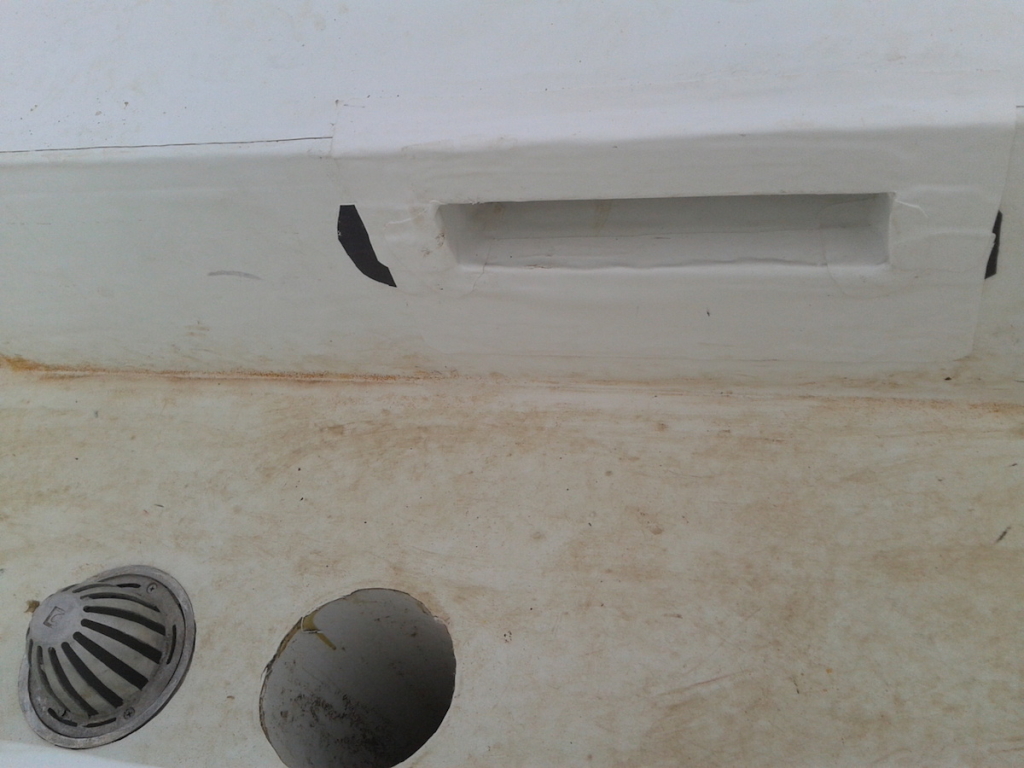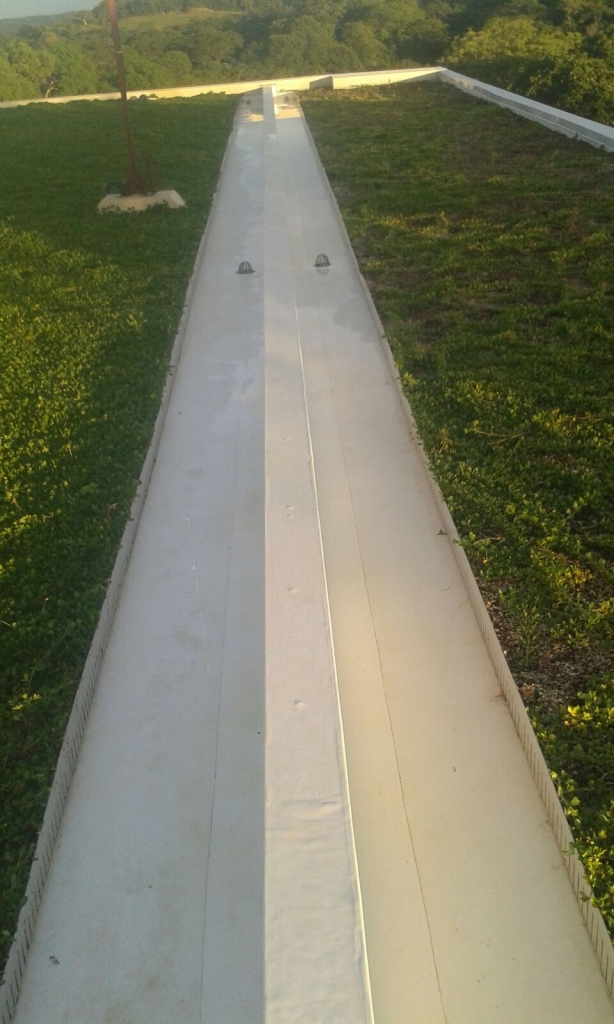SARCO Architects Costa Rica provides some important tips on smart roof design
As rainy season is finally kicking in full-blown this year, I thought I would share some essential tips and good practices for effective roof rainwater design for your home in Costa Rica.
In recent years, we have observed a trend in Costa Rica where as designers, we can no longer rely on historical and statistical data to allow our engineers to design a rainwater system, but we must realize that climate change has brought to Costa Rica stronger storms with much higher peak rainfall in short periods of time.
No longer to we care how many millimeters or rainfall where registered in the month of September, but now we care about designing a rainwater system to cope with a crazily huge amount of water that falls in a 30-minute storm.
Just recently we had downtown San José with significant flooding in the streets because of a nasty storm that dumped about double the amount of water that the city’s system is designed to handle.
We must simply understand that this is reality that we must live with and do our part to provide solutions to handle these situations. We live in a tropical location and with it comes rainfall that is becoming stronger and stronger.
Roof gutter dimensioning
With the reality that we are facing stronger rainfall in peak moments, at SARCO Architects Costa Rica we have determined that we can no longer rely on the old standard gutter sizes. For years, there have been the standard 18-inch or 24-inch gutter sizes, which existed basically for the reason of how to effectively cut a galvanized sheet metal roll to maximize material usage. If you wanted to save money and had a smaller home you would use the 18-inch gutter, and if you had larger roofs then the 24-inch gutters would be used.
Nowadays, we feel that we cannot keep using these “standard sizes”, and must actually have the mechanical engineer crunch some numbers and design the gutter size in order to effectively handle the peak water flow that the roof area will produce. Then as architects, we will effectively find the best way to design a nice-looking solution that is based on some real calculations, not just on the old rule-of-thumb.
Gutter overflows – Essential
Another key element that we at SARCO Architects Costa Rica have now put into our designs is to integrate as much as possible some form of gutter overflows into the gutter designs and layouts.

Example of side overflow on TPO gutter. If the downspouts fail, the water fills to the level of the overflow and safely out.
Using sloped overhangs help to always place the gutters in the lowest possible points in the roofs (especially on more traditional roof designs) which is a safety net by itself as this will ensure that water will never “climb upwards” and into the overhangs or inside the house.
If this kind of setup is not possible, maybe because of architectural style, or because of a specific roof design, then always try to incorporate some form of overflow to the gutters.
Simply think of a critical situation where the downspouts can clog, and the gutter then fills up with water, and think of a solution where the water has a way to escape outwards before it can somehow go into the home and create damage.
Downspouts – always double up!
In recent years one of the trends that we see as a byproduct of climate change in Costa Rica is that rain intensity in peak moments has increased, and we have no way of knowing if it will keep this trend or not. Whatever the case, in most areas in Costa Rica we have stronger peak rains than we historically used to have. Rainfall statistics and averages that you can search in the meteorological institute have little use since we will not design a roof system to handle a monthly average but to handle the strongest rainfall in a single moment.
Engineers will always use the peak monthly averages based on historical information, but we have decided that a good practice that is of minimal additional cost for the project (as opposed to the potential cost of damages of not doing this) is simply to double up on your roof downspouts. The cost of a few extra pipes coming down from the roof is really minimal as compared to the potential cost of damages to the inside of a home in a case where a roof gutter could overflow inside the home, with the potential damages to finishes, systems, furnishings and/or electronics.
Doubling up on the roof downspouts can be a big help that either allows the system cope with a extremely strong rainfall during a storm, or to work properly when some of the downspouts are not working as they should (potential clogging due to tree leaves, improper maintenance, or other forms of debris that hamper proper water flow).
At SARCO Architects Costa Rica we have now decided to apply this to all our projects.
Horizontal plumbing is also part of your rainwater system
It is easy for a lot of people to make the common mistake of thinking that the rainwater plumbing system ends once the water is coming vertically off the roof through the downspouts. This is wrong. Once the water is down to the ground, there is always a horizontal distribution system typically made up of large pipes and registry boxes.
This piping not only should also be designed properly, and pipe diameters sized according the the total roof area being handled as the pipes move downstream, but homeowners should also remember that this part of the system should also be kept clean and maintained (see section on maintenance below). On homes in more natural locations, it is not uncommon to find an animal that somehow made its way inside a pipe, then got stuck there and died. This creates a clog, that if in the right place can create a back-up of water inside the downspouts (if water has nowhere else to go) and creates a problem up on the roof.
Green Roofs
Writing this article has convinced me that I should write about green roofs on a separate article, since they have lots of other considerations that need to be taken into account.
Keep posted for this separate article in the next couple of weeks.
I will mention here that since on green roofs the rain gutters are typically integrated into the roof surface by a separation of the growth medium on top of the waterproof membrane, they do require some specific care to keep the gutters free of vegetation, dirt, sediment, etc., and that ideally they must also be provisioned with some form of overflow so that in the event of the downspouts clogging up, the entire roof surface does not become a small pool!
Maintenance, maintenance, maintenance….
Now, here is where all the time and effort in proper design, thinking about the what-ifs and how to plan around them can come all crashing down. Probably the most important component in making sure you have a trouble-free home is to give your roof the proper maintenance.
You need to keep in mind that the lush landscapes and jungle settings that you will fall in love with in Costa Rica bring with them surrounding trees, leaves blowing in the wind, bird droppings acting as seeding from other trees and fruits, animals climbing on the roof and creating some havoc, etc., etc., etc.
The single most important aspect of proper roof maintenance is simple cleaning. Gutters must be kept clean and free of leaves and any sort of deposits around the gutter downspouts that can impair the proper water flow into the spout. Airborne dust can create a layer of sediment on the bottom of the gutters, that before you know it can start growing some weird plants that got seeded by bird droppings. It is not uncommon to find a dead bird simply clogging the entry of a downspout, or some other type of dead animal left trapped in the middle of the rainwater plumbing.
I still recall one case where we had a call to check on a home we had done where the property manager claimed they had problems with the gutters. To our surprise, during the visit we had a strong rain and the gutter quickly filled and started overflowing like a big cascade, while also deforming the gutter due to the water’s weight. After the rains receded, not only did we find a clogged gutter full of leaves, but the workers started pulling out solidified matter from inside the downspout, which easily went down two and a half feet. Who knows for how long that had been collecting in the gutter and pressing down into the downspout, which of course could never allow any water to go down. This is of course a case example of what should not happen!
We hope that this article helps you in taking into account these important matters to allow you to have a proper roof and rainwater system design. We are still surprised how many examples we see of things done wrong simply because some builders keep doing things “the way we’ve always done them”. This is where many homeowners go wrong, and end up selecting some local crews or designers who rely on the way it’s always been done. At SARCO Architects Costa Rica we feel it is our duty to look deeper into these matters and come up with smart and sometimes out-of-the-box solutions to provide proper roof design.








